What antibiotics to treat sinusitis. When are antibiotics prescribed? Inflammation of the maxillary sinus. Main symptoms.
Sinusitis is one of the most common diseases when inflammation is in the area of the maxillary sinuses.
In addition, sinusitis can occur due to dental problems when you neglect treatment deep caries, or other ailments that can affect teeth.
In this material we will analyze the features of treating sinusitis with antibiotics, find out their name, price, and release form.
Attention to X-ray interpretation
Therefore, prescribing an antibiotic in the presence of bile-green secretion in the first 10 days is not justified. Antibiotic and nasal rinse saline solution lead to the same result. Misinterpretation of X-rays also leads to the prescription of antibiotics. We often see children diagnosed with pneumonia or sinusitis based on misinterpretation of radiographs. Who hasn't heard the term "pneumonia principle"? When chest radiographs are performed in children with a cough, chest and throat, these radiographs may be abnormal and do not necessarily indicate the presence of pneumonia, much less the need for antibiotics.
How does the disease manifest itself?
You can suspect the first manifestations of sinusitis in adults by characteristic features. Most often, the disease occurs as a complication after suffering from a cold or other ailments. In this regard, if you notice a deterioration in general health, as well as an increase in body temperature, which is accompanied by pain in the area maxillary sinuses- one may suspect sinusitis.The reasons for contacting the clinic for consultation are the following signs:
Sprays and drops for sinusitis
The same is true for sinus x-rays. When facial chest occurs during the flu, when a child has a runny nose, nasal obstruction and irritated mucous membrane, with a swollen face, in 90% of cases there is a change in x-rays. This does not indicate a diagnosis of sinusitis, much less the need to prescribe antibiotics. Therefore, changes in facial radiography or chest do not necessarily indicate the presence of a bacterial infection and the need for antibiotics.
The child most often has irritated and uninfected airways. One of the main causes of this irritation is allergies. However, in environment There are a number of factors that irritate the respiratory tract of any person, allergic or not. Irritation is most common in children under five years of age respiratory tract caused by viral infections. Who has never caught a cold and found themselves with an irritated throat, a stuffy nose, a tight, coughing and full chest?
- 1) A feeling of fullness and pressure that arose in the sinuses.
- 2) At the first stage, there may be mucous discharge from the nose; as inflammation increases, it acquires a green tint, and when it enters the purulent stage, it becomes yellowish.
- 3) Pain in the area of the maxillary sinuses and head, which intensifies when bending over, in the evening the pain increases, in the morning it is usually less.
- 4) General loss of strength, which is accompanied by high temperature, up to 30 degrees and above. A rise in temperature is not typical.
In order to prescribe the best antibiotic to defeat exactly those microorganisms that caused sinusitis, a nasal swab is prescribed. The procedure is painless and does not take much time.
Caution when using antibiotics
Often viral infection improves, but irritation remains and the child is left with nasal symptoms, cough and worsening for a long time. In the first five years of life, a child has an average of 10 viruses per year. This is not a weakness of the body, not low resistance, and, especially, insufficient care. early years life is a time when children have viral infections that cause cough, chieira and repeated nasal symptoms while maintaining respiratory irritation, these infections promote the production of antibodies.
When are antibiotics needed?
Reception antibacterial drugs advisable if a person has severe severe pain, heat, and purulent discharge. At mild degree the course of the disease can be completely managed - inhalations, etc.First of all, before starting to take antibiotics for sinusitis, the root cause of its occurrence, as well as its causative agent, should be established. All this is necessary in order to choose the right antibiotic that will destroy the viral infection we need.
After the fifth year of life, the child develops a more mature and stable immune system, which leads to a gradual decrease in viral infections. Other factors present in the environment, such as pollution, weather changes, strong odors, cigarette smoke and insecticide, may also worsen or maintain respiratory irritation. We emphasize that there are no allergies to odor, weather change or pollution, but these are factors that act to irritate the respiratory tract or perpetuate symptoms.
In children, the most common irritant is a viral infection. Therefore, to be successful in treating allergic children, it is important to reduce irritation. The antibiotic does not reduce this irritation! Therefore, we must be cautious and cautious in the use of antibiotics in children. These drugs have numerous side effects and often leave bacteria more resistant and difficult to overcome.
It should be remembered that in some cases, taking antibiotics may be completely ineffective and will only worsen the healing process. For example, if you have an allergic reaction that results in sinusitis, taking these medications will be a waste of time. In addition, if sinusitis is caused by a fungal infection, antibiotics will not help either.
Source: Brazilian Society of Pediatrics
My 5 month old daughter has a cough that gets a little dry and comes out of her chest like a void, but she has no fever and is eating well and playing normally. Could this be an allergy rather than an infection?
Sheila, just checking to find out.
It is good to be aware of the differences as well as inflammatory respiratory processes.Regina, when the antibiotic is well labeled, it's not a problem.
My 8 month old son's pediatrician always takes amoxicillin every month, he had a tight throat and sore ear wanted to know if there was a problem. Information about your child's development. Enter your child's date of birth. This means that as bacteria become more resistant, it becomes increasingly difficult to find drugs that fight the infection when it is, in fact, accurate. How do you know if sinusitis is caused by viruses or bacteria? Here comes the second line to avoid: Most of the time there is no need to do an X-ray or CT scan.
In connection with these aspects, it is strictly forbidden to independently select antibiotics for the treatment of sinusitis. Don’t be lazy, go see a qualified specialist. This way you will speed up your recovery and also avoid unpleasant complications.
What antibiotics should I take to treat sinusitis?
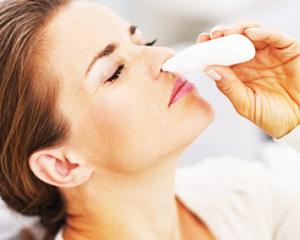 And so, let's figure out what antibiotics to take for sinusitis, and also what kind of drugs best cope with this disease.
And so, let's figure out what antibiotics to take for sinusitis, and also what kind of drugs best cope with this disease. As mentioned earlier, it is necessary to determine the pathogen using a smear and, based on the test results, buy effective antibiotic, which is suitable for adults. This is the best solution.
They are not fundamental for a doctor to close the diagnosis and therefore mean that the patient must be exposed to unnecessary doses of radiation, which may increase the risk of developing cancer. From the symptoms, a doctor is well placed to assess whether sinusitis is caused by viruses or bacteria—and whether an antibiotic is needed. Frames that last more than ten days, get worse after five days, or whose symptoms are very severe to begin with, are usually due to the presence of bacteria.
There are cases chronic sinusitis when episodes last more than 12 weeks. In these situations, the doctor may need to request some imaging tests to evaluate the condition. Most Time, basic care and symptom control are enough to overcome sinusitis. Rest is important for recovery, and drinking hot drinks and inhaling helps loosen secretions and unclog cavities. A good measure is to wash your nose regularly saline solution to ease congestion. Your doctor may also prescribe medications to relieve symptoms.
Please note that if, after starting to take the medication, relief does not occur within 2-3 days, it means that the antibiotic was chosen incorrectly, or resistance to it has developed, then the drug needs to be replaced.
Mainly certain groups of antibiotics are used. Below are the names:
- penicillin is the most common and preferred drug.
- macrolides - mainly used if the patient is intolerant to penicillin.
- fluoroquinolones - synthetic drug, to which bacteria have not yet “developed immunity.”
- cephalosporins - in case of low effectiveness of other drugs, this group of drugs is prescribed. Used for severe inflammatory processes.
Choosing the right drugs
Let's take a closer look at the types of antibiotics for the treatment of sinusitis (see names below) - they come in tablets, injections, drops, and also in a convenient spray form.The pharmacy offers a large number of, both modern (Zitrolide, Macropen) and time-tested antibacterial drugs (Amoxil, Flemoxin Solutab, etc.). The choice is up to you and your doctor.
Detailed information about sinusitis, its different patterns and the most indicated behavior is contained in the guidelines published by the Brazilian Medical Association and the Federal Medical Council. This is a guide that follows the principles evidence-based medicine: The degree of validity of each behavior is assessed according to the evidence contained in the scientific literature, also classified by the quality of the studies.
The "air-filled" cavity in the skull is known as the sinus. Humans have four pairs of nasal cavities, which are located on the forehead, behind the cheeks, between the eyes and deep behind the ethmoids. The breasts become infected when a pathogenic organism, such as a virus, bacteria, or fungus, grows inside the sinus and causes intermittent sinus obstruction. Inflammation paranasal sinuses nose and mucous membrane of the nasal passages, headache, nasal obstruction, fever and facial pain are some of the important symptoms sinus infections.
Antibiotics for sinusitis in tablets
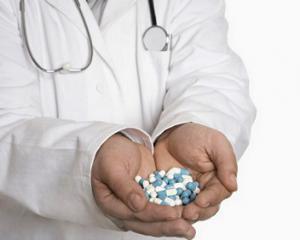 The tablets are familiar to everyone, they have a convenient form, and are also relatively easy to take.
The tablets are familiar to everyone, they have a convenient form, and are also relatively easy to take. Let's take a closer look at which antibiotics for the treatment of sinusitis are available in tablet form:
- 1) Macropen- a common drug that belongs to the group of macrolides, active substance midecamycin. Effective against pneumococcus and Haemophilus influenzae. Adults take for 2 weeks, 3 times a day after meals. An hour after administration, the maximum amount of active substance will be in the blood.
- 2) Augmentin- belongs to the group of semi-synthetic penicillins, which have protection in in this case This is clavulanic acid. It has a wide spectrum of action and complex composition. Refers to 3rd generation antibiotics. Treatment with the drug should not be continued for more than 14 days. Side effects include vomiting, nausea, dysbacteriosis.
- 3) Sumamed- a modern and popular antibiotic, which is often used for sinusitis and other diseases. Belongs to the group of macrolides. Take 1 time per day, 2 hours after or an hour before meals. The course of treatment will be no more than 5 days.
- 4) Flemoxin Solutab- effective and resistant to the influence of gastric juice. Belongs to the category of penicillins. When taking, listen to your doctor’s recommendations, this will help speed up your recovery.
- 5) Amoxiclav - prescribed for sinusitis, otitis, bronchitis and other diseases, has a wide spectrum of action and belongs to the group of semi-synthetic penicillins, which are capable of destroying the walls of bacteria. Indicated mainly for adults only.
- 6) Zitrolide- has an antimicrobial effect, belongs to the macrolide group. Apply once a day, 1 hour before or 2 after meals. Dispensed by prescription.
Antibiotics for sinusitis in injections
In case of signs severe intoxication body, it makes sense to prescribe antibiotics intramuscularly. As a rule, they have the highest bioavailability.- 1) Ceftriaxone- intended for the treatment of infectious diseases, is a derivative of penicillin. Belong to the 3rd generation. Mainly used during acute phase sinusitis. Sold in powder form for the preparation of a solution for intravenous and intramuscular injections. Contraindicated during pregnancy.
- 2) Cefazolin- is a semisynthetic cephalosporin antibiotic, has a pronounced antimicrobial effect. After administration, it is quickly absorbed, the concentration in the blood remains for 12 hours. The drug must be diluted in 4-5 ml of isotonic sodium chloride solution, or use plain water for injection. Allergic reactions and gastrointestinal disorders may occur.
Antibiotics for sinusitis - drops or spray
Among other things, to treat sinusitis you can use drops and sprays, which also contain antibiotics.- 1) Isofra- the most popular remedy in the form of a spray; it is preferred to use it instead of injections and tablets. Apply 4-6 times a day, spray into each nostril alternately. The course of treatment is a week. Before use, the nose must be cleared of snot.
- 2) Polydexa with phenylephrine- has antibacterial and vasoconstrictor effects. It is used in the form of a spray 3-5 times a day, the duration of treatment is around 7 days. Contains the antibiotics neomycin and polymyxin.
A response to the therapy should appear within 2 days; if this does not happen, the chosen drug is ineffective and there is no point in taking it further. Requires replacement with analogues.
Doctors usually prescribe antibiotics for sinusitis. Antibiotics for Sinus Infection. Because the microbial infections, allergies and autoimmune reactions can also cause sinus infections. Antibiotics are not prescribed if you have a viral infection. Bacterial infections are treated with antibiotics. Depending on the type of infection and severity of symptoms, doctors prescribe antibiotics. Various types Antibiotics help kill bacteria and stop more bacteria from multiplying. They help ease headache and sinus and nasal congestion.
Dosages and duration of treatment are selected individually; for consultation, please contact your doctor. Uncontrolled use can lead to a significant deterioration in a person’s condition, as well as the development of microorganism resistance to the chosen drug.
Two types of short-acting antibiotics and a wide range of antibiotics are used to treat sinusitis. Narrowband antibiotics can kill certain types bacteria, while antibiotics wide range actions do great job for many types of bacterial species.
The best antibiotics for adults
Amoxicillin: Amoxicillin belongs to the penicillin group of antibiotics and is considered the best antibiotic for sinus infection. Amoxicillin kills bacteria by destroying bacterial cell walls. If you are allergic to amoxicillin, doctors may prescribe penicillin or macrolides.
In the last century, the use of a special group of drugs – antibiotics – was very popular. They began to be used to treat all ailments of an infectious nature. A whole era of antibiotics had arrived - they were not difficult to purchase at any pharmacy, so patients practically determined their own course of treatment. Consequently, incorrectly selected drugs caused a side effect in the form of allergies, as well as the body's resistance to the effects of the antibiotic.
Moxifloxacin: Moxifloxacin has recently been added to the list of antibiotics for the breast. New antibiotics are discovered because certain bacteria become resistant to certain antibiotics over time. Moxifloxacin is used to treat chronic or stubborn sinusitis.
Cotrim: Many patients experience worsening of the situation when they take antibiotics belonging to the penicillin family. Cotrim is good for these patients. He contains magical power two antibiotics: trimethoprim and sulfamethoxazole. Bacteria need a certain amount folic acid for survival. They produce it themselves and seek it from external sources.
New times have presented drugs that are based on plant materials and can very quickly eliminate the inflammatory process. On the contrary, not all groups of antibiotics are able to resist pathogenic viruses that provoke diseases such as herpes, some types of influenza and the most common - sinusitis. Therefore, it is advisable to understand which antibiotics are effective in eliminating sinusitis and its consequences.
Cefuroxime: Cefuroxime or Ceftin is prescribed to treat sinusitis. In acute sinusitis, symptoms are severe and usually require strong antibiotics, such as ceftin. It is also recommended for patients who do not improve after taking amoxicillin. Ceftin kills bacteria by destroying the bacterial cell walls.
It is excellent for bacterial sinusitis as well as respiratory tract infections. It is considered the best antibiotic for sinusitis and bronchitis. It prevents bacterial growth and helps relieve symptoms. Azithromycin reduces the ability of bacteria to produce proteins necessary for their survival. As a result, the bacteria become weak.
When the nasal sinuses (more accurately called the maxillary sinuses) become inflamed, this occurs unpleasant illness like sinusitis. Very often it acts as a complication of a simple runny nose.
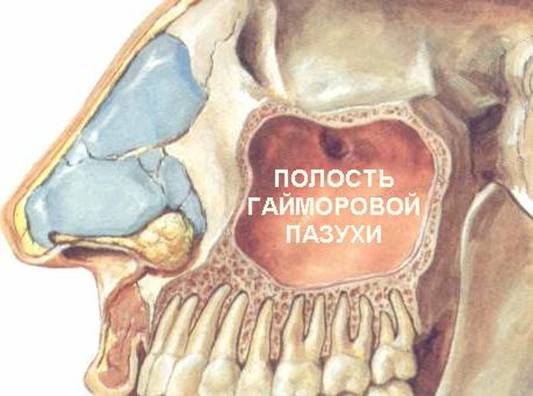
Once the bacteria become weak, the immune system controls the infection easily and effectively. Those who are allergic to penicillin can take sulfamethoxazole, cefaclor, loracarbef, clarithromycin, trimethoprim. Treatment involves the use of common antibiotics when sinusitis symptoms do not go away even after completing a narrow range of antibiotics. Cephalosporins and fluoroquinolones are best examples widely used antibiotics for a wide range of sinusitis. If you are allergic to these antibiotics, you may want to turn to How to Get Rid of a Sinus Infection Without Antibiotics for some alternatives.
It is not at all difficult to identify the first symptoms in an adult. The first symptoms that should become the driving force behind an urgent trip to the doctor are characterized by:
- When a person experiences a pressing and bursting feeling in the nasal sinuses.
- After which mucous discharge may appear. In the absence of therapy, the inflammatory process intensifies and this can be understood by the green tint of the mucous discharge. If yellowish discharge It is worth sounding the alarm, as this indicates the beginning of a purulent process.
- Pain in the area of the maxillary sinuses begins to worry, which can intensify in the evening and radiate to the head. Also, the pain becomes much stronger when bending over.
- The patient feels a loss of strength, and the temperature rises significantly. But for chronic sinusitis(if the patient started the disease or chose the wrong therapy), then an increase in temperature is not typical.
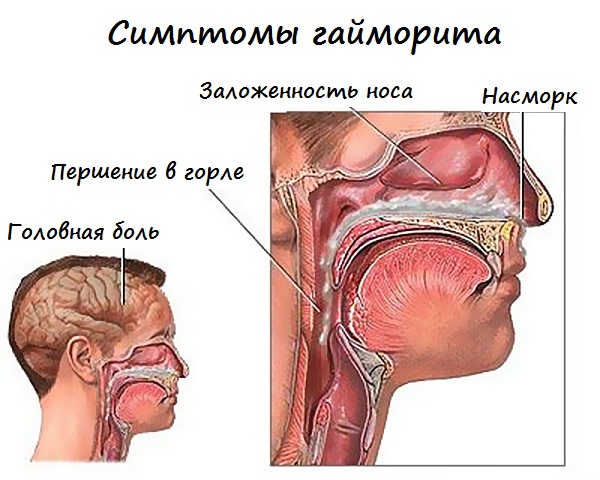
Those who frequently suffer from sinusitis should try to strengthen immune system body to significantly reduce your chances of contracting a cold or flu. Additionally, they should keep your breasts clean. Daily saline deflation of nasal or sinus irrigation helps prevent sinusitis. It is difficult to name just one antibiotic as the best antibiotic for sinus infection because the effectiveness of a particular antibiotic can vary from person to person. Although the choice the best antibiotic, it is necessary to take into account the nature and severity of sinusitis.
How is the diagnosis confirmed?
To determine the disease, radiography is used; it is thanks to it that the presence of purulent contents in the nasal sinuses is determined. The most outdated method of treatment is puncture. The procedure is not pleasant and scary for almost every adult. Fortunately, this technique is a thing of the past and is extremely rarely used due to dangerous consequences and extreme pain.
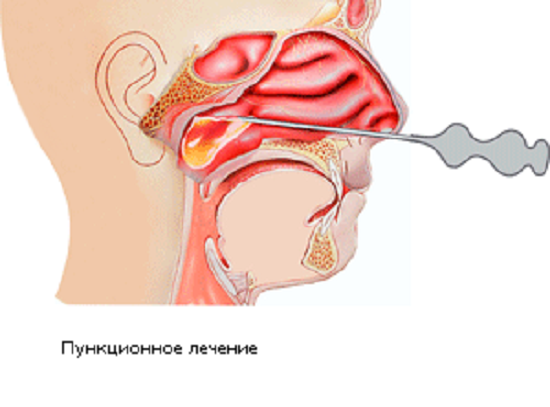
It is important! Remember that the doctor must send the patient for a smear, which will determine the type of microorganism that caused sinusitis. As a result, you can select an effective antibiotic as accurately as possible to quickly cope with the infection.
Antibiotics: when are they needed?
The first alarming symptoms are expressed in the form of copious purulent discharge, strong pain syndrome, which gives rise to the head and increased temperature. If sinusitis has not progressed to the purulent stage, then you can get by with home treatment, which involves washing the sinuses with a special solution, instilling drops, and herbal inhalations.
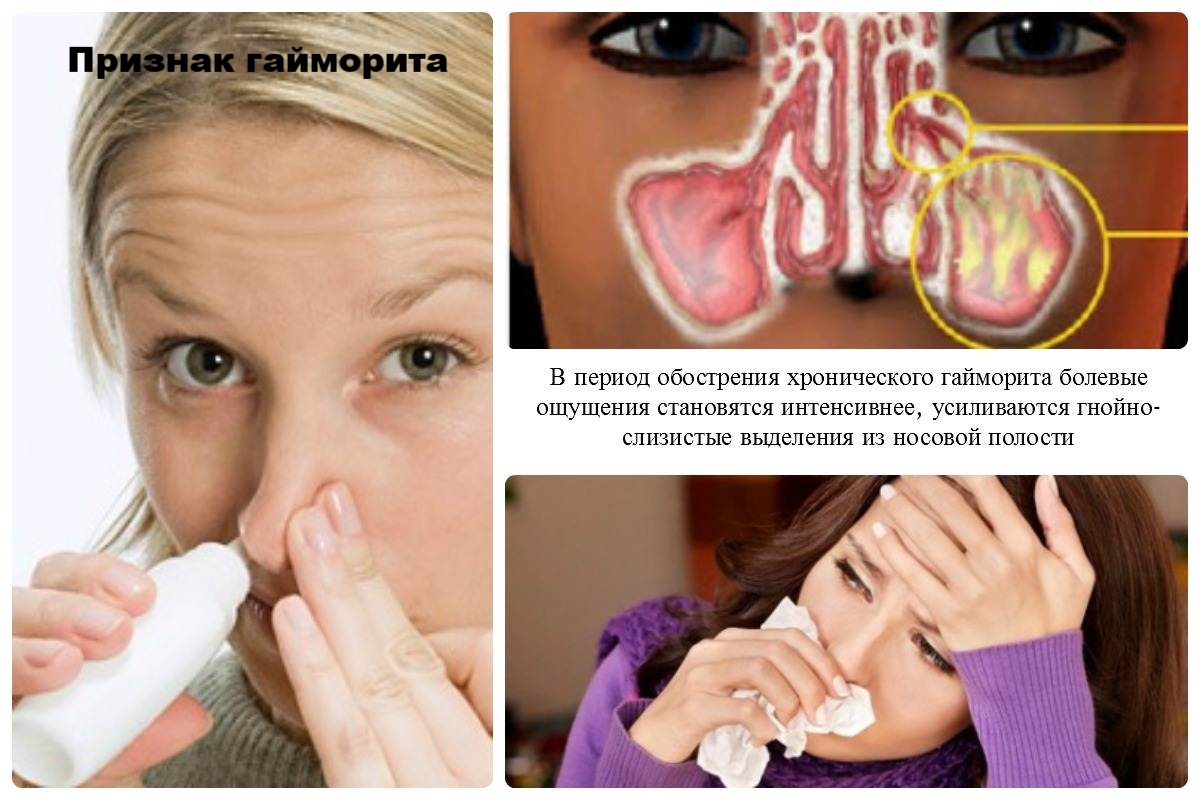
Before you start taking antibiotics, you should determine which pathogen caused the inflammatory process. As already mentioned, this can be done through a smear. You cannot make a diagnosis yourself and select antibiotics at random - this can lead to irreparable consequences. When the type of pathogenic microorganisms or virus is known, it is not difficult for a specialist to select the correct effective group of antibiotics.
Note! There are a number of cases when taking antibiotics will be completely useless. First of all, for allergic reactions. Against their background, sinusitis can easily begin to develop. Therefore, treatment with antibiotics will be inappropriate and ineffective. A similar result can be expected when the causative agent of sinusitis is a fungal infection.
Not knowing clinical picture course of the disease, you cannot ignore going to a specialist and confirming the diagnosis with subsequent diagnostics for correct selection medicines.
How are antibiotics taken correctly?
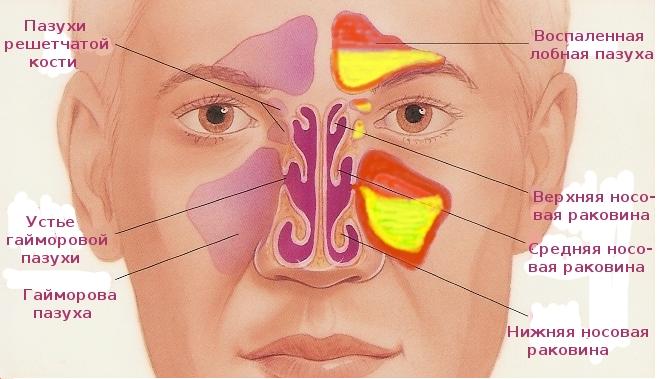
For successful treatment It’s not enough to have the right drug. After all, the result of recovery directly depends on the patient’s actions - how he follows the doctor’s instructions, whether he interrupts the use of antibiotics, or whether he uses additional self-prescribed drugs that can block the action of the antibiotic.
So, the specialist, depending on the complexity of the disease, prescribes an antibiotic in the form of injections, oral administration, or in the form local application. At moderate severity Sinusitis is mainly treated with tableted antibiotics. More severe damage requires mandatory intravenous administration, but it can also be administered intramuscularly. Once relief occurs, the patient will be switched to oral medications.
When taking antibiotics, the patient must follow the following recommendations:
- Do not deviate from the dose determined by the doctor.
- Take the drug strictly on time.
- Do not interrupt the prescribed course of antibiotics unless observed side effects.
- Do not take additional medications that have not been approved by your doctor.
- Under no circumstances should you take alcohol or drugs at the same time.
- When purchasing a drug, pay attention to the expiration date.
- Additionally, to improve overall well-being, the doctor may prescribe thinning agents and anti-edema medications. Don't ignore them.
- You cannot use self-selected nasal drops in parallel with antibiotics. The entire course of treatment is drawn up by a doctor.
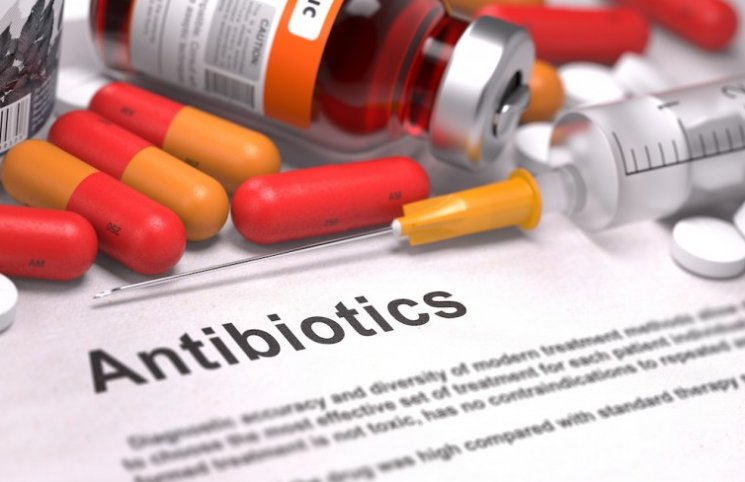
Reference! On average, a course of treatment in tablet form lasts from one week to fourteen days. If this period is exceeded, the patient may experience intestinal dysbiosis. Consequently, beneficial microorganisms will be destroyed.
What antibiotics are used to eliminate sinusitis?
After establishing the diagnosis and subsequent identification of the causative agent, the specialist can choose an antibiotic from the main groups that are the most effective for eliminating sinusitis:
- Penicillin. It is considered the most common antibiotic that is used for manifestations of sinusitis.
- Macrolides. They are in second place after penicillin. Appointed in case individual intolerance penicillin group.
- Fluoroquinolones. It is a synthetic antibiotic. It can quickly eliminate the activity of the pathogen - bacteria, since the latter have not yet developed immunity to it.
- Cephalosporins. When there is no result from other drugs, this type of antibiotic is prescribed, which perfectly eliminates any inflammatory process.
Attention! If the patient does not feel any relief already on the second or third day of taking the antibacterial drug, then this is evidence that the antibiotic was incorrectly selected and is not able to eliminate the pathogen. In addition, you need to take into account possible allergic consequences and the individual characteristics of the body.
Video - Sinusitis: signs, symptoms and treatment
Treatment of sinusitis
Despite the fact that the symptoms of sinusitis caused by pathogenic bacteria are similar to the symptoms of sinusitis caused by a virus, the treatment is still significantly different. Experts do not turn to antibiotics immediately, but only when as a last resort when the effect of local drugs is absent or abundant purulent discharge of a green or yellow hue from the sinuses has begun.
Viral sinusitis is treated in a special way. After all, penicillin macrolides are not able to eliminate the virus. The patient will feel improvement with this type of sinusitis only when the virus goes into an inactive phase.
On the contrary, inflammation of a bacterial nature can be triggered by several types of pathogenic bacteria:
- Enterobacteriaceae.
- Streptococci.
- Staphylococci.
- Moraxella.
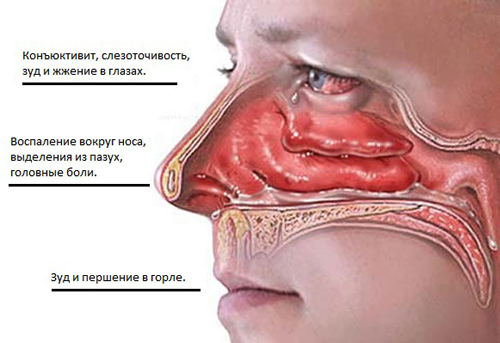
When a patient has no purulent drainage from the nasal sinuses, there is no elevated temperature, but there is severe swelling, then allergic sinusitis is diagnosed. In this case, the effects of antibiotics are powerless.
Tablet form of antibiotics against sinusitis
Antibiotics can be found in the form of capsules and tablets - this is a fairly convenient and most preferred form of release by patients medicine. There are several of the most effective antibiotics in tablet form, which cope well with the disease and its consequences.
| Antibiotic name | Image | Brief description of the action |
|---|---|---|
| Macropen | A representative of one of the main groups of antibiotics – macrolides. The effect on pathogenic viruses occurs due to the active substance – midecamycin. Most often used for sinusitis caused by Haemophilus influenzae and pneumococci. For adults, it is recommended to take the drug three times a day for two weeks. |
|
| Augmentin | Thanks to the complex composition this drug rightfully received the status of a third generation antibiotic. The main effect is due to clavulanic acid. But the duration of treatment with this remedy should not exceed two weeks. Otherwise, side effects may occur: vomiting, and dysbacteriosis in the intestines. |
|
| Sumamed | A modern antibiotic from the macrolide group, which is actively used in the treatment of sinusitis. Since the drug is potent, doctors prescribe taking it for no more than five days. The frequency of administration is limited to once a day, half an hour before meals. |
|
| Flemoxin Solutab | This is a representative from the series penicillin antibiotics. The main difference of the drug is its resistance to gastric juice. | |
| Amoxiclav | An antibiotic of semi-synthetic penicillins, which is prescribed for many viral ailments - bronchitis, sinusitis. The main effect of the drug is the ability to destroy the walls pathogenic bacteria. Please note that it is used exclusively for the treatment of sinusitis in adults |
|
| Zitrolide | This is a drug of the macrolide group, which has a high antimicrobial effect. It is recommended to take once a day a couple of hours before meals. Please note that it is only available with a prescription. |
Attention! If the antibiotic does not show results in the form of improvement in well-being within 48 hours, then you should not take it longer; it is ineffective against sinusitis.
Intramuscular and intravenous types of antibiotics
When a patient experiences intoxication of the body, the use of injections is indicated, since antibiotics in this form are highly bioavailable. So, the following drugs are considered the most effective:
| Antibiotic name | Image | Main action |
|---|---|---|
| Ceftriaxone | Since the drug is designated as a derivative of the penicillin group, it is usually used for most infectious diseases. This is a clear representative of third generation antibiotics and the only salvation during an exacerbation purulent sinusitis. It can be purchased in powder form from which the injection is prepared. It is allowed to administer both intravenously and intramuscularly. note that this antibiotic prohibited for the treatment of pregnant women |
|
| Cefazolin | Represents the cephalosporin group of semisynthetic antibiotics. Upon administration of the drug, its concentration in the blood will remain for twelve hours. The antibiotic should be used with caution, as side effects may occur, namely, stomach upset, and in some cases allergies |
Local preparations
The early stages of sinusitis are not so difficult to eliminate with the help of a special spray or drops. But even in this form antibiotics are produced.
| Antibiotic name | Image | The essence of the action |
|---|---|---|
| Isofra | One of best alternatives injections and tablets. It is recommended to use at least four times a day for one week. First, before using the spray, the nostrils are cleaned of purulent mucus(possible through salt rinsing) |
|
| Polydexa with phenylephrine | An antibiotic in the form of a spray that has excellent vasoconstrictor and antibacterial effects. It must be used three times a day, and if necessary – five times. The duration of the course is one week. Active substances drugs – polymyxin and neomycin |
How to treat sinusitis in children with antibiotics?
Most often, children may suffer from complications after rhinitis, which manifest themselves in the form of sinusitis. At the same time, children clearly manifest allergic reaction, so doctors in mandatory antiallergic drops are prescribed. In some cases, the use of antibiotics is not necessary.

Attention! When using a spray or drops, the child should not feel a burning sensation. If such discomfort is present, it is recommended to use sea water.
| Antibiotic name | Image | Main action |
|---|---|---|
| Amoxicillin | A safe drug that is used even to treat newborns. For children, this antibiotic is used as a suspension. |
|
| Solutab flemoxin | Antibacterial agent for children (combined), taken as syrup |
|
| Cefuroxime | Representative of cephalosporin antibiotics, which is approved for the treatment of children |
|
| Aminoglycoside group | Can be purchased as a spray. Basic active ingredients– isofra and polydex |
|
| Sumamed | This is the least toxic drug of the macrolide group. For children from six months to three years it is taken as a suspension, and for older children in tablet form. |
The main disadvantage of taking antibacterial drugs for a long time is the destructive effect on the intestinal microflora. Consequently, the patient may develop dysbiosis. Therefore in for preventive purposes recommended to take Fluconazole. In case of stool disorder, a specialist may prescribe taking prebiotics.

It is very important that the dosage and duration of antibiotic use is determined by the attending physician. Otherwise, the patient’s condition may worsen significantly, and pathogenic microorganisms become resistant to the selected antibiotic.
What happens if you don't take antibiotics?
Sinusitis is dangerous due to its complications, which can manifest themselves as serious illnesses, life threatening sick. So, the list of complications of sinusitis includes:
- Meningitis. Enough dangerous illness, characterized by an inflammatory process of the membranes of the brain.
- Abscess. A process of isolated suppuration that occurs in the brain.
- Complete loss of one of the most important senses in life – smell.
- The beginning of the inflammatory process in the facial nerve.
- Spread of the lesion down the respiratory tract.
- Inflammation of the eye socket.
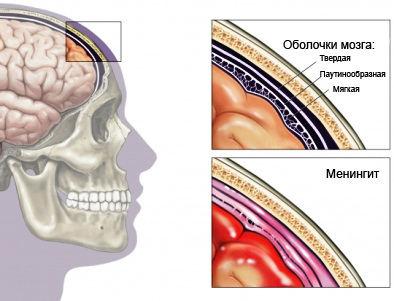
Possible side effects after taking
Antibacterial treatment with antibiotics can not only improve the patient’s condition, but also lead to unpleasant manifestations body. In general, if we consider the treatment of sinusitis, then with a reasonable selection of antibiotics, the patient gets better in five days. But, in any case, the doctor should warn about possible side effects:
- Swelling of the face or throat.
- Difficulty breathing.
- Rashes on skin, redness or other manifestations.
- The patient fainted.
- There is increased dizziness.
- Gastrointestinal disorders.
When manifested alarming symptoms should be called urgently ambulance and do not self-medicate. Successful recovery depends not only on the specialist, but also on the timeliness and correctness of the patient’s actions.
